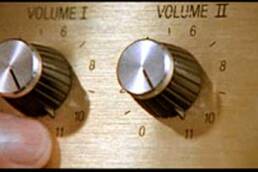In his latest Backside column, Editor-in-Chief Mitchell Scott waxes on mugs and other wholly unalive things. Or are they?
I have a favourite mug. It was given to me by a friend who, at that time, was relatively new to pottery, and as a result — I’m just postulating — the mug is a little overbuilt. It’s a relatively heavy, deep Middle Ages-like goblet. Finished with an earthy glaze and a wide bottom, the vessel is virtually bombproof, as demonstrated by its 15 years of service. I use it for everything from triple-shot lattes to beer (it takes a full tall boy). With enough room in the handle for all four fingers, it’s my preferred driving mug, even though it comes nowhere close to fitting into a cup holder.
Upon reflection, I have few notable relationships with everday things that are both simple and useful. My mug trumps all other dishware, save for a fishing knife made by my grandfather, but I fish much less than I drink. I’m fond of an Italian leather jacket, which I don’t wear every day in my puffy-coat hinterland, but the jacket is relatively new so our bond is still evolving. And I like certain pieces of gear, like skis and packs and bikes, but even the most cherished quotidian object is usually fleeting — you either break it, wear it out, or replace it. It’s just a thing after all, right? An inanimate, non-sentient, wholly unalive thing?
My mug trumps all other dishware, save for a fishing knife made by my grandfather, but I fish much less than I drink.
What is this mysterious force that bonds us with something so scientifically dead? It turns out a whole body of research examines the potential of our relationship to everyday items. “My house is not just a thing,” writes Karen Lollar, a professor of communication studies at Denver’s Metropolitan State University. “The house is not merely a possession or a structure of unfeeling walls. It is an extension of my physical body and my sense of self that reflects who I was, am, and want to be.” Everything in the universe, including inanimate objects, consists of energy, and as such, everything vibrates. If our own vibrations match those of a particular thing, it creates in us a certain attachment to that object. A life-force connection. I use other mugs — we have a flotilla — but I only care for one. Our vibrations are alive and aligned. Our bond has moved past its genesis story, its aesthetic, and its functionality—we are a shared history. What thing do you love the most?
Related Stories
New KMC and CMC Cover Tease
These are the magazines you will be looking for! They will start to see the light of beautiful day May 16th. Our…
10 Years of KMC
The new winter edition of KMC marks the 10th anniversary of the publication, and the Nelson Star recently caught up…
Cigarettes in the Sea
Far away, hidden in the vast scatter of islands known as the Indonesian archipelago, Papa Adam sets out from the…








